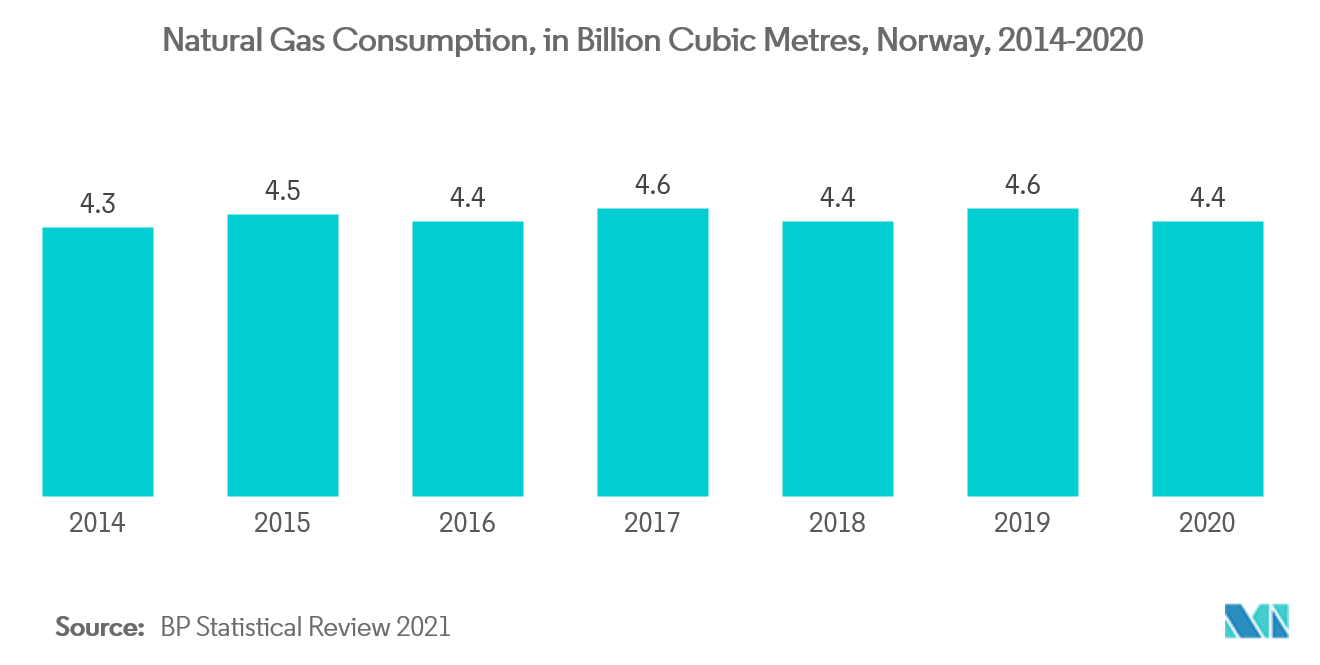Market Trends of Europe Well Intervention Industry
This section covers the major market trends shaping the Europe Well Intervention Market according to our research experts:
Onshore Segment to Dominate the Market
- Onshore drilling encompasses all the drilling sites located on dry land and accounts for 65% of Europe's oil and gas production rigs. Onshore drilling is similar to offshore drilling but without the difficulty of deep water between the platform and the oil.
- The global crude oil prices have shown signs of recovery and are improving at a good pace, and the onshore projects are easier to kick-start than offshore. Therefore, due to the recovery of crude oil prices, onshore projects are expected to record significant growth over the forecast period and drive the well intervention market.
- The Russia-Ukraine conflict has opened many diverse issues for sites in Russia. However, the Russian oil and gas industry is independent of European and US companies. Several international companies have announced plans to divest their interests from Russian oil and gas projects, which are mostly onshore. This factor is expected to hinder the market's growth as the wells require expertise and investments from Europe and North America.
- For instance, Shell PLC announced plans to exit its joint ventures with Gazprom and related entities in response to events in Ukraine. The assets include a 27.5% stake in the onshore field Sakhalin-II LNG complex on Sakhalin Island and a 50% interest in the onshore Salym Petroleum Development and the Gydan energy venture in Siberia.
- Hence, the onshore segment is expected to dominate the well intervention market. However, the sanctions on the largest oil and natural gas producer in Europe-Russia are expected to hinder the market's growth.

Norway to Grow Significantly
- Although Russia is the most important exporter of oil and natural gas in the region, the sanctions imposed by European and North American countries are expected to have dire results for the Russian industry. However, these sanctions can act as a boon for the Norwegian oil and gas sector, the second-biggest natural gas producer in the region.
- In 2021, natural gas demand was expected to recover to its pre-crisis levels and increase slightly during the forecast period. In 2020, the consumption of natural gas in the country was around 4.4 billion cubic meters (bcm), which decreased primarily due to COVID-19 from around 4.6 bcm in 2019, which can be seen in an uptick in the number of distributed licenses.
- For instance, in January 2021, Norwegian Petroleum Directorate announced that the authorities of Norway offered 30 companies with ownership interests in a total of 61 production licenses on the Norwegian Shelf in the Awards in Predefined Areas (APA ) 2020. Out of the 61 new production licenses, 34 were awarded in the North Sea region, which exhibits 18% of undiscovered oil and gas potential in the country.
- Furthermore, in December 2020, Equinor and its license partners agreed to invest around NOK 3 billion in the North Sea Statfjord Øst field to improve recovery by approximately 23 million barrels of oil. The installation of a pipeline for gas lift, modifications on Statfjord C, and drilling of new wells have been planned to start in 2022, while the production is likely to be scheduled for 2024. All through this, well intervention tools are expected to be used.
- In recent years, companies previously involved in the oil and gas activities in the North Sea have become more focused on reducing greenhouse gas emissions from the industry. Norway is seriously targeting to achieve the short-term goals set by European Union for 2030, which are significant steps in achieving zero carbon emissions by 2050. Overall, this factor led to the creation of more carbon-neutral models with companies using various upstream technologies to reduce greenhouse gas emissions.
- Hence, Norway is expected to grow significantly in the market due to its increasing exploration activities and the demand from countries in Europe for reliable natural gas due to sanctions on Russia.


